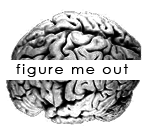
The results of this study indicate the need for and the importance of appropriate assessment tools for dissociative symptoms.ĭissociative Identity Disorder (DID) is an uncommon disorder that has long been associated with exposure to traumatic stressors exceeding manageable levels commonly encompassing physical, psychological and sexual abuse in childhood that is prolonged and severe in nature.

The prevalence of dissociative symptoms (cut-off score > 2.5) in the SRT group was 43%. Young adults with self-reported traumas (SRT) gave significantly higher scores than young adults with no self-reported traumas (NSRT) in all four subscales of the DIS-Q: (1) identity confusion (2) loss of control over behavior, thoughts, and emotions (3) amnesia and (4) absorption. 244 participants (aged 18-30) completed the questionnaire, 44% (107) of them experienced a serious injury, life-threatening and/or other traumatic events.

Therefore, we translated the DIS-Q questionnaire (Vanderlinden et al., 1993) into the Slovenian language and investigated the incidence of dissociation in Slovenian young adults. However, many times dissociative symptoms in young adults stay unrecognized due to the lack of appropriate assessment tools. People with dissociative disorders are at increased risk of complications and associated disorders, such as depression and anxiety disorders, personality disorders, self-harm, suicidal thoughts and behavior, alcoholism and drug use, etc. Introduction of diagnostic criteria for adolescent DID in revised versions of DSM-5 would refine the assessment of dissociative disorders in this age group. While SCID-D is promising for diagnosing dissociative disorders in adolescents, its modest congruence with self-rating dissociation, and lack of relationship between diagnosis ande childhood trauma and family dysfunction suggest that the prevalence rates obtained with this instrument originally designed for adults require to be replicated. Among them, only separation anxiety disorder was significantly more prevalent than controls. Of dissociative adolescents, 93.9% had an additional psychiatric disorder. Childhood emotional abuse and family dysfunction correlated with self-reported dissociation. There was no difference on gender distribution, childhood trauma, and family dysfunction scores between dissociative and non-dissociative groups.

Among 73 participants, thirty-three (45.2 %) had a dissociative disorder, twelve (16.4%) having DID and 21 (28.8%) dissociative disorder not otherwise specified. There was excellent inter-rater reliability between two clinicians on SCID-D diagnoses and scores. All patients were invited for an interview with Structured Clinical Interview for DSM-IV Dissociative Disorders (SCID-D) administered by two senior psychiatrists in a blind fashion. Hundred-sixteen consecutive outpatients between 11 and 17 years of age who were admitted to the child and adolescent psychiatry clinic of a university hospital for the first time were evaluated using Adolescent Dissociative Experiences Scale, Adolescent Version of the Child Symptom Inventory-4, Childhood Trauma Questionnaire, and McMaster Family Assessment Device. ABSTRACT The aim of this study was to determine the prevalence of dissociative identity disorder (DID) and other dissociative disorders among adolescent psychiatric outpatients.


 0 kommentar(er)
0 kommentar(er)
